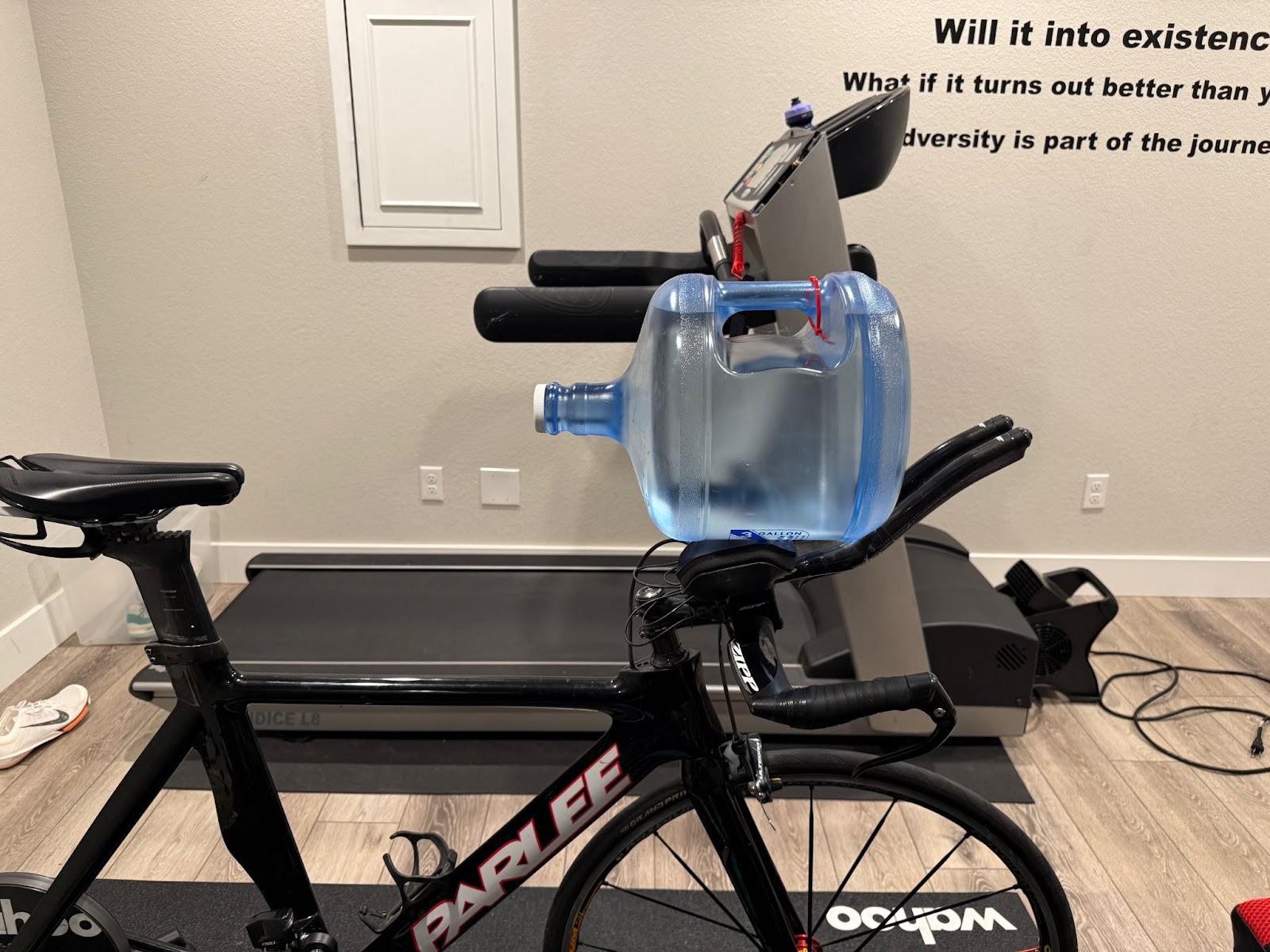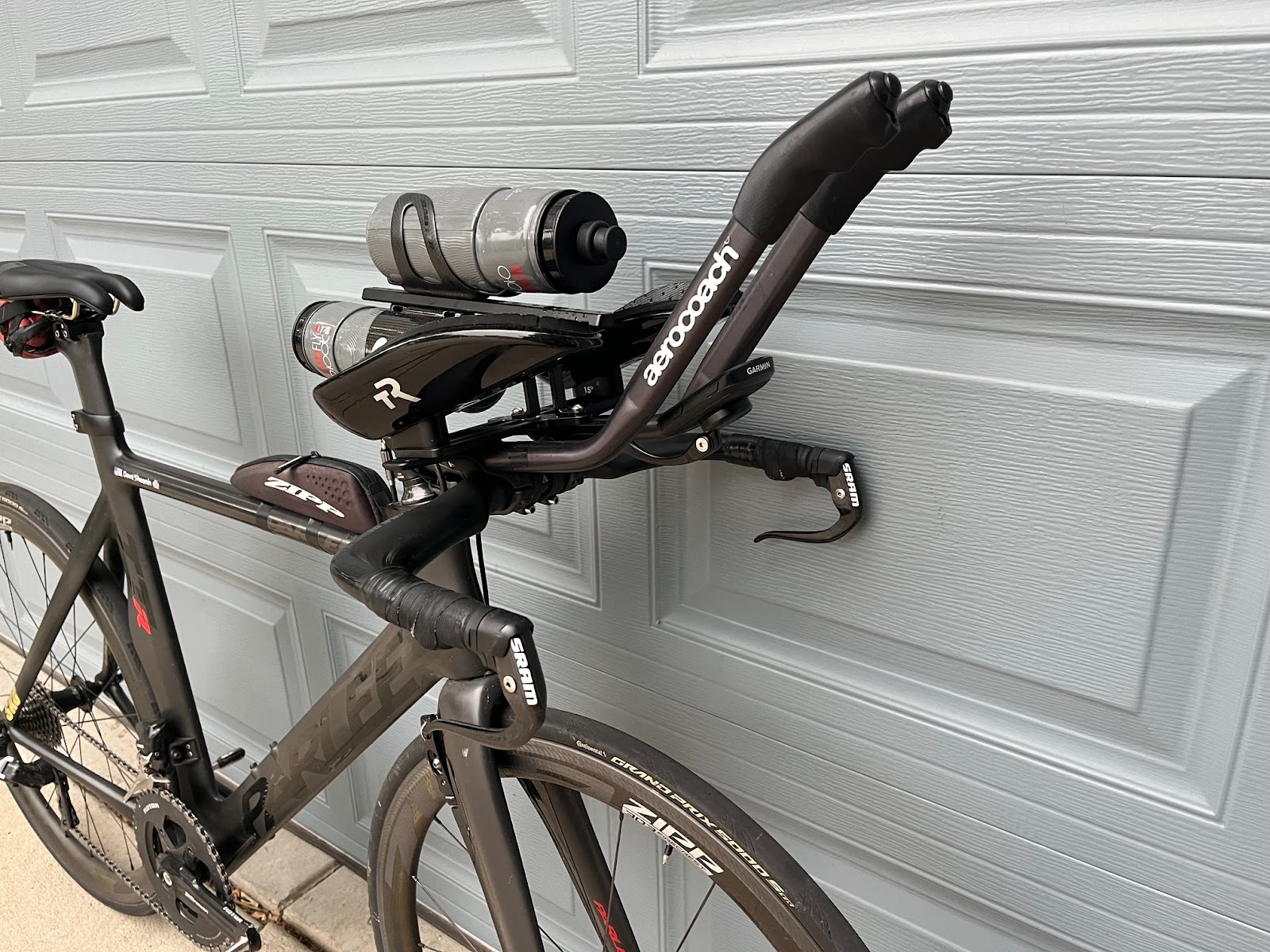
A few years ago, a video from Jim Manton of ERO Sports, ushered in a brief era of triathletes and time-trialing cyclists racing with water bottles down the front of their jerseys. Aero testing was showing results of a shocking 5-7 percent reduction in drag. Follow up testing by others found up to 9 percent reductions! This quickly became a trend with triathletes–arguably the biggest aero-gain bang-for-your-buck ever. I set my fastest ever 70.3 bike split with a bottle down my jersey on a course I’ve raced multiple times. I was sold!
Then, the practice was banned for safety reasons. What next? Triathletes will not be held down by the letter of the rulebook! Between the arm (BTA) setups, which had been popular for years (typically with a single bottle cage zip-tied between aerobar extensions or with a “torpedo” bottle on a platform) began to get bigger and bigger!

A significant part of the advantage of the bottle down the jersey and then BTA setups is that the space between the rider’s chin/chest and the top of the bike is filled. The airflow then goes around, rather than through, creating less drag. So the less open space in the area below the rider’s chest, the (theoretically) faster the bike can go.
The new solution was to mount multiple bottles to the handlebars or stems. Of course, triathletes took this to extremes so World Triathlon announced new rules (as of April 15, 2025) that define and restrict stem/bar-mounted hydration systems. Ironman has adopted these rules as well.
If you are thinking about building your own BTA hydration system, be sure you read the rules carefully to assure compliance. (https://cms.triathlon.org/assets/ec5a81d9-93e9-4c46-a23a-0d16e51c1c87/Fairings.pdf)
But know that they allow you multiple options for building a high-mounted one or two-bottle setup.
In addition to the aero advantage of having bottles up high (and not in the main frame triangle), my experience is that it’s a lot easier to grab a bottle and drink (or sip from your straw). Further, while you are not allowed to rest any part of your body on your BTA setup, it is a great cue for me to hold aero position (with my chin just above the top bottle). Finally, building my BTA setup gave me a great place to mount my computer–out front where I can see it without changing my head position (and far enough away from my face that I can read it without glasses…).
There are cons as well. Safety comes to mind immediately. I’m not sure how building towers of bottles attached to the steering column of a bike is safer than a bottle down a jersey, but here we are. Related to safety, your bike will definitely steer and handle differently with a few pounds of liquid mounted up high and on a rotating axis. Curves, corners, and crosswinds all hit differently! Finally, price may be another deterrent. The market for BTA setups is just opening up and some of the solutions are expensive. I’ve seen a lot of athletes using custom, 3D-printed setups. This gives a lot of flexibility to build something that perfectly meets your needs, but I question the safety and durability of some of these solutions.

In the end, I always recommend experimenting with new ideas and determining what works best for you. I’m very happy with my setup. Am I faster because of it? It’s impossible to know without specific wind-tunnel testing. Do I feel faster? You bet I do!